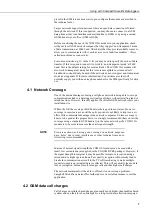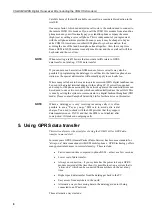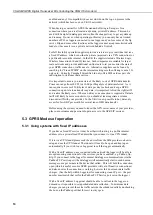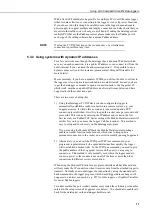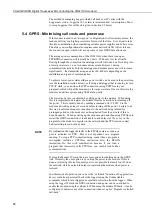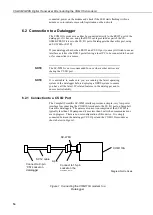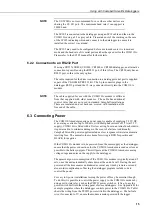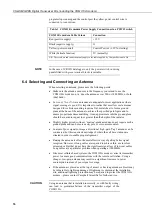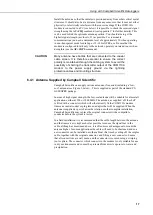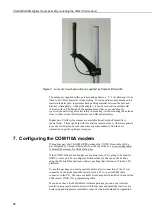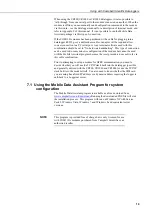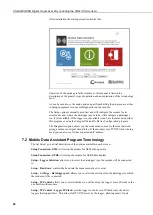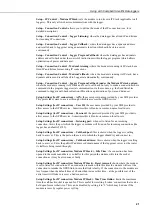
Using with Campbell Scientific Dataloggers
7
preset in the SIM it is not necessary to pre-configure the modem as described in
the technical note.)
Larger networks support connections where an open data connection is formed
through the network. If this is supported, you may choose to connect to a GSM
data-phone either via a landline modem (landline to GSM) or by using a second
GSM phone in your office (GSM to GSM).
Before considering the use of the COM110A modem in your application, check
with your local GSM network company that they support ‘non-transparent’ mode
of data transmission, at 9600 baud. Check also that they provide suitable routes to
allow you to communicate with it, such as access via land-line modems – this is
called asynchronous connectivity.
For some networks, e.g. O
2
in the U.K, you may need to specify the mode of data
transfer. If this is required, request it to work in ‘non-transparent mode’ at 9600
baud. This is the default setting for most networks. The COM110A modem will
also work in transparent mode but this is more susceptible to errors and call
breakdown so should only be used if the network does not support non-transparent
mode (see Appendix D for more information). Your airtime provider will
normally supply you with an extra phone number for the SIM specifically for data
use.
4.1 Network Coverage
One of the main advantages of using a cellphone network is being able to set up a
communications link to a datalogger virtually anywhere without installing land or
telephone lines. However, this only applies if a suitable GSM network covers your
installation site.
Within the UK the coverage of GSM networks is good in most areas. However,
coverage in remote areas can still be quite poor and is not likely to improve, as it
offers little commercial advantage to the network companies. Unless coverage is
known to be good at the proposed site, we strongly recommended that you test the
coverage using a standard GSM handset (on the same network as the COM110A
modem is to be used) to measure the exact signal strength.
Even areas shown as having good coverage on network maps can
have ‘holes’ due to local interference or other technical reasons, so
site testing is recommended.
In areas of normal signal strength the COM110A modem can be used with a
small, low cost antenna (as supplied in the CS-GSM/GPRS package). However, if
the signal strength is marginal it may be possible to improve reception using a
raised and/or a higher gain antenna. Poor quality reception will normally lead to
breaks in communication or result in the PC software having to make multiple
requests to ensure uncorrupted data is collected. This will not usually lead to data
loss or corruption, but may result in longer calls and thus higher call charges.
The network maintainer will be able to offer advice on coverage problems.
Campbell Scientific can also offer further advice on suitable antennae to suit the
application.
4.2 GSM data call charges
Call charges on cellular-based phones are usually much higher than landline based
systems and can therefore be quite high for a long-term data collection campaign.
NOTE
Summary of Contents for COM110A
Page 2: ......
Page 4: ......
Page 6: ......
Page 10: ......
Page 48: ...CS GSM GPRS Digital Transceiver Kits including the COM110A modem 38...
Page 54: ......
Page 60: ......
Page 66: ......
Page 68: ...CS GSM GPRS Digital Transceiver Kits including the COM110A modem D 2...
Page 72: ......
Page 75: ......















